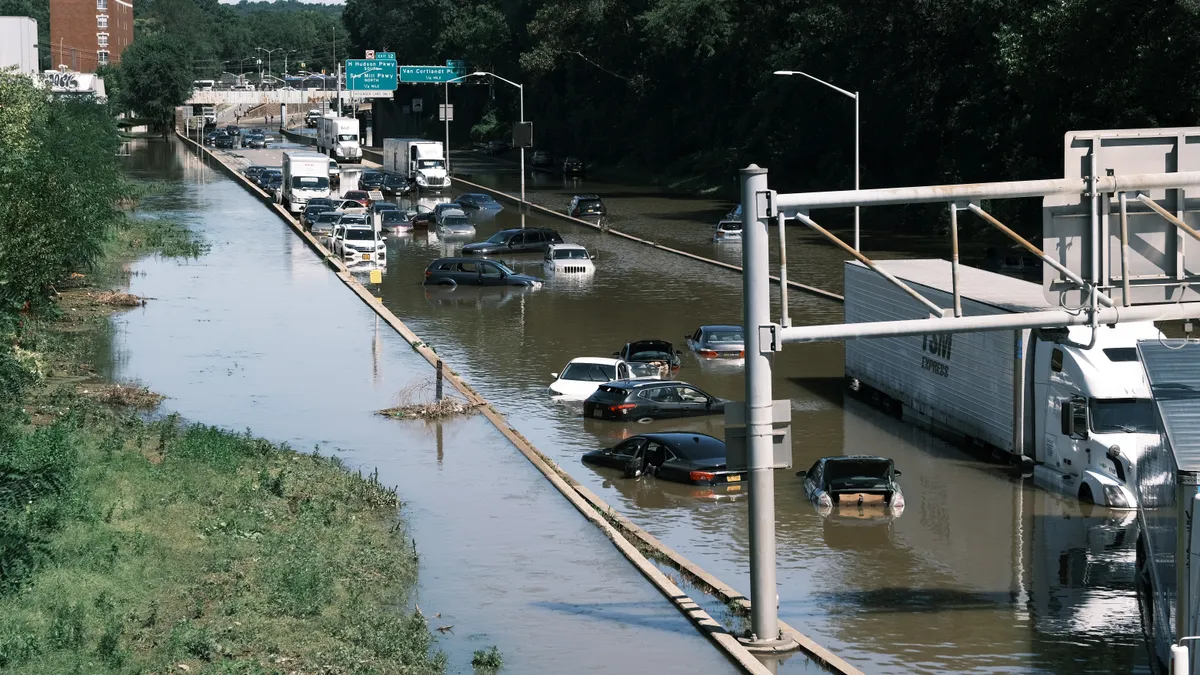Cindy Stauffer is Vice President, Property Specialist with New York City-based insurance firm Marsh McLennan Agency. Opinions are the author’s own.
We all complain about extreme weather — too cold, too hot, too much or too little rain, or too much snow. But few of us are as influenced by bad weather as the construction industry.
It’s no surprise that weather affects construction project plans, material selections, timelines and more. In recent years, severe weather occurrences and climate shifts have created often unexpected problems for the industry. Between 1989 and 2018 there were an average of 520 natural catastrophes every year. In 2019 there were 820 natural catastrophes — almost a 58% increase.
Excessively strong winds result in injuries from falling or airborne debris from the construction site. Unusually high rainfalls turn ground into unmanageable mud or create deep water problems.
Overly dry conditions often make it impossible to even start foundation work. Weather delays that last for a full month or more may mean missing the construction season altogether. These extreme weather conditions result in increased workers’ compensation claims and subsequent project delays.
Severe weather events have created significant changes in construction material composition and manufacturing. Increasingly stronger, lighter and more durable materials are now being specified, which drives up the cost of materials. Project delays and risks to the labor force result in increasingly higher insurance costs.
Construction companies have to increase the cost of a project to cover rising insurance costs or simply avoid pursuing some projects because they can’t afford the insurance. How can construction companies manage these risks? Here are three steps:
Recognize the problem and prepare for the inevitable extreme weather problems. Identify your exposures — overall and on a given project, and predict worst-case scenarios.
Develop a workable emergency action plan. If you have 10 or more employees OSHA already requires you to have such a plan in writing.
A good plan should include assigned responsibilities, expectations for what employees are to do in a given situation and a projected timeline. Key employees need to be involved and clearly engaged in the development of this plan.
The boots-on-the-ground employees are often the ones with the clearest vision of what needs to be done. They can identify areas of concern or solutions that may otherwise be overlooked.
Test the plan. Run drills with the workforce to see how your plan actually works in real time. Make changes if you discover roadblocks or issues you didn’t expect. Consistently training employees on protocols to respond to disasters will help ensure that everyone knows their assigned roles.
Keep in mind that no two projects are exactly the same, so the problems created by extreme weather may also differ greatly. You’re often dealing with new employees, new equipment, new materials and new subcontractors. Revisit your plan, even during a specific project, to make sure it works for this particular job.
Controlling risk
In thinking about insurance, it's important for contractors to know that traditional risk solutions may not cover all economic losses related to extreme weather events. Parametric insurance can complement a traditional policy to help you better manage the risk you face from exposure to a natural disaster.
This type of policy insures a contractor against the occurrence of a specific event by paying a set amount based on the magnitude of the event rather than the amount of the losses.
It pays out when the event occurs, without the need for claims adjustors. Upon verification of the underlying data, you can receive benefits in a few weeks. The payout structure is agreed on upfront and based on a pre-determined formula.
There are three categories of parametric insurance:
- Category 1 is for natural disasters. Earthquakes and hurricanes are the most common but lately wildfires and floods in certain parts of the U.S. have caused enormous problems as well.
- Category 2 is for extreme weather. Unusually high or low temperatures or periods that were too wet or too dry can be more easily insured through parametric insurance solutions, allowing insureds to transfer the potential impact.
- Category 3 is for non-damage business interruption. Parametric insurance can often address other external events such as extended power interruptions, lack of access to construction sites for extended periods, supply chain disruptions and pandemics — regardless of the lack of physical damage.
Parametric insurance gives you a different way to think about funding the uncertainty of catastrophic risk events. Coupling it with a well-designed plan that you continually update and communicate to employees, subcontractors and other stakeholders can help you create a more solid response to erratic, extreme weather, natural disasters and more.













